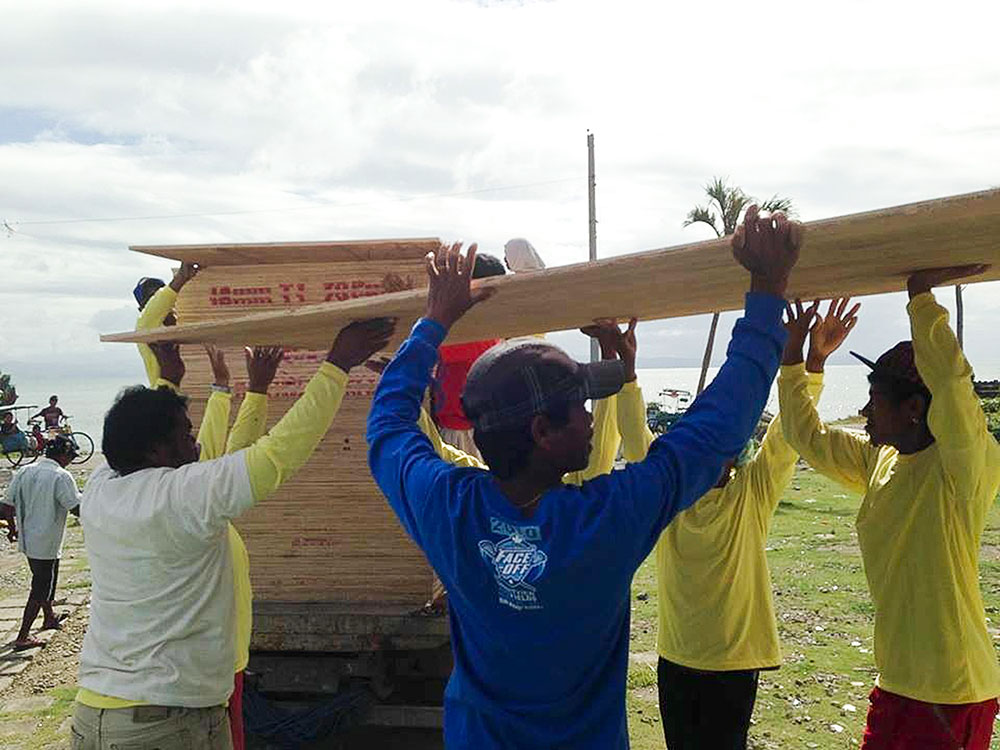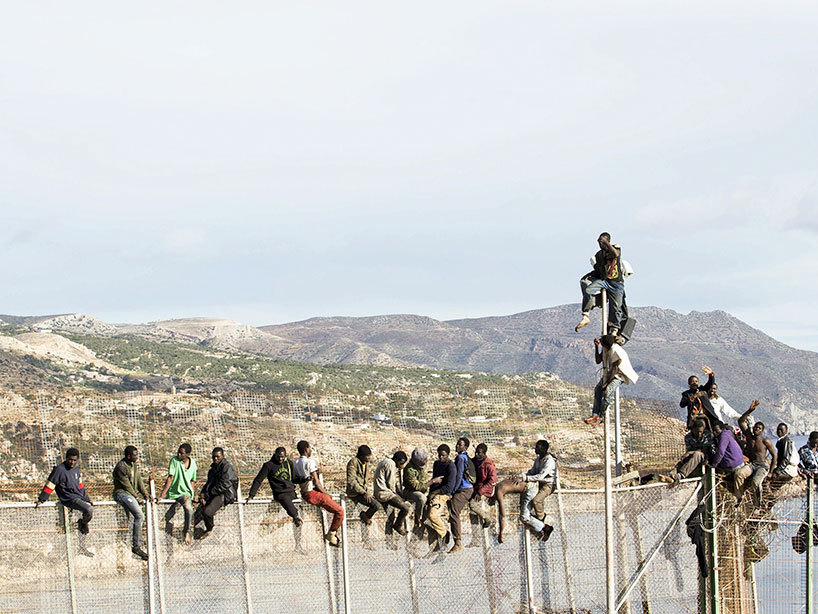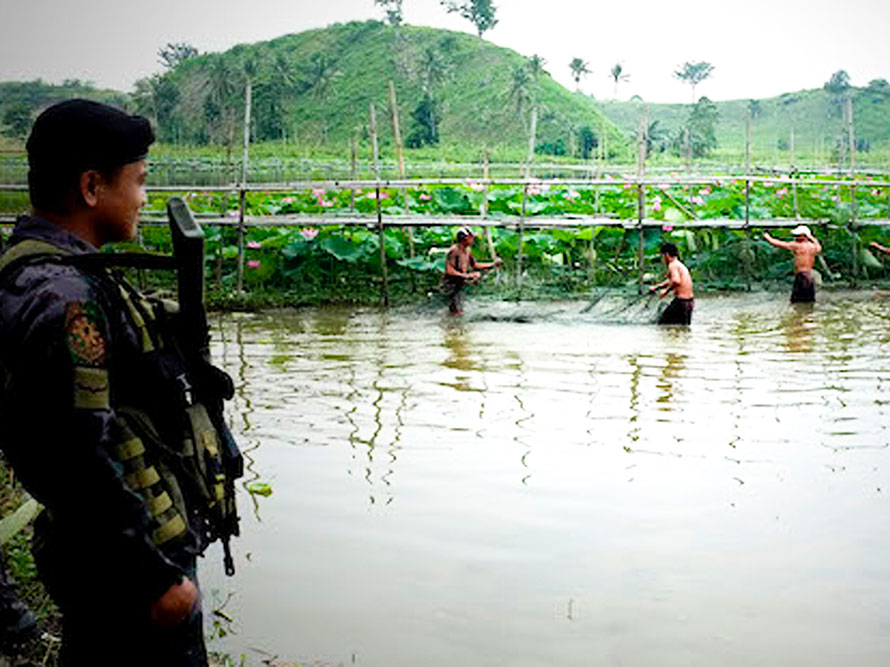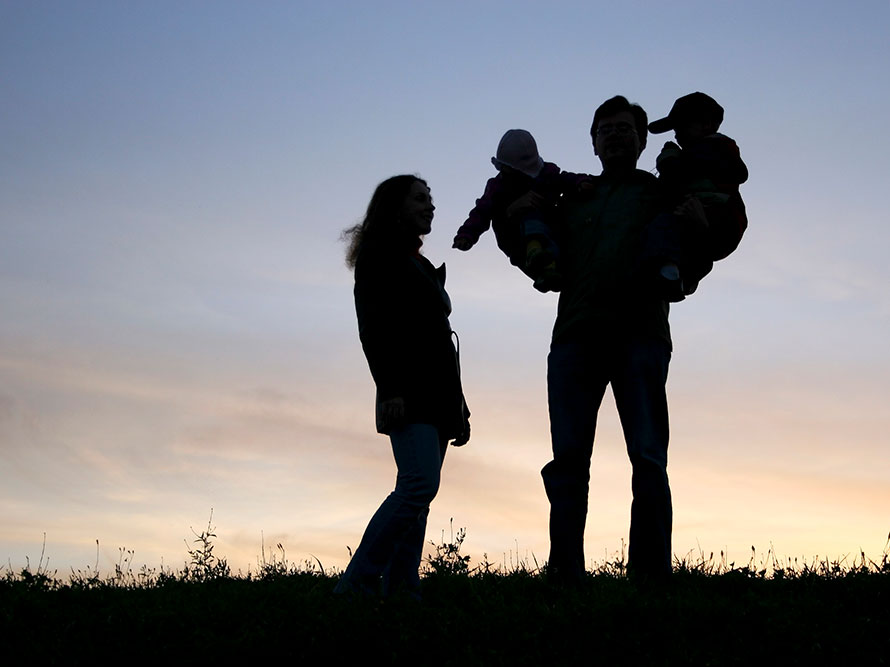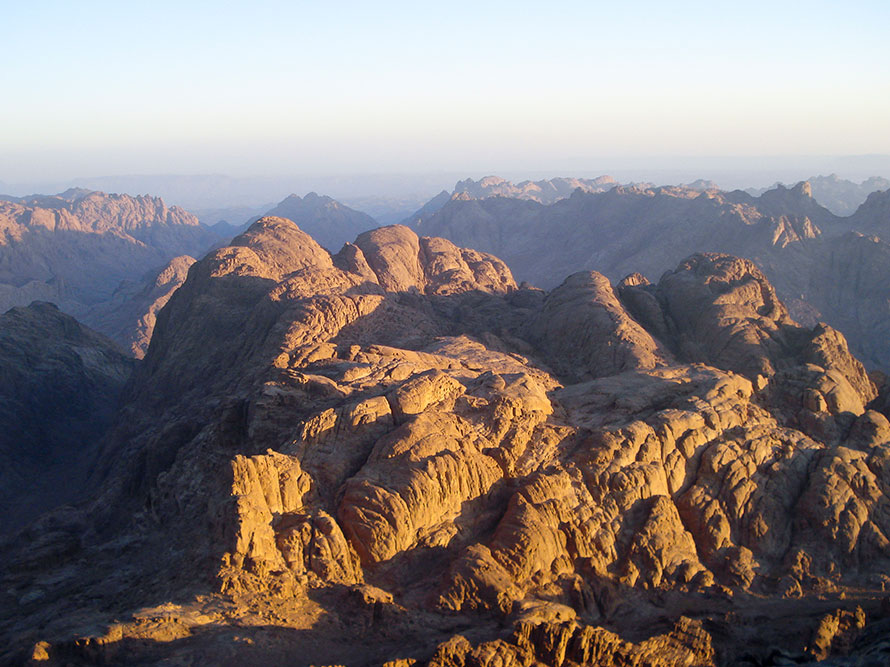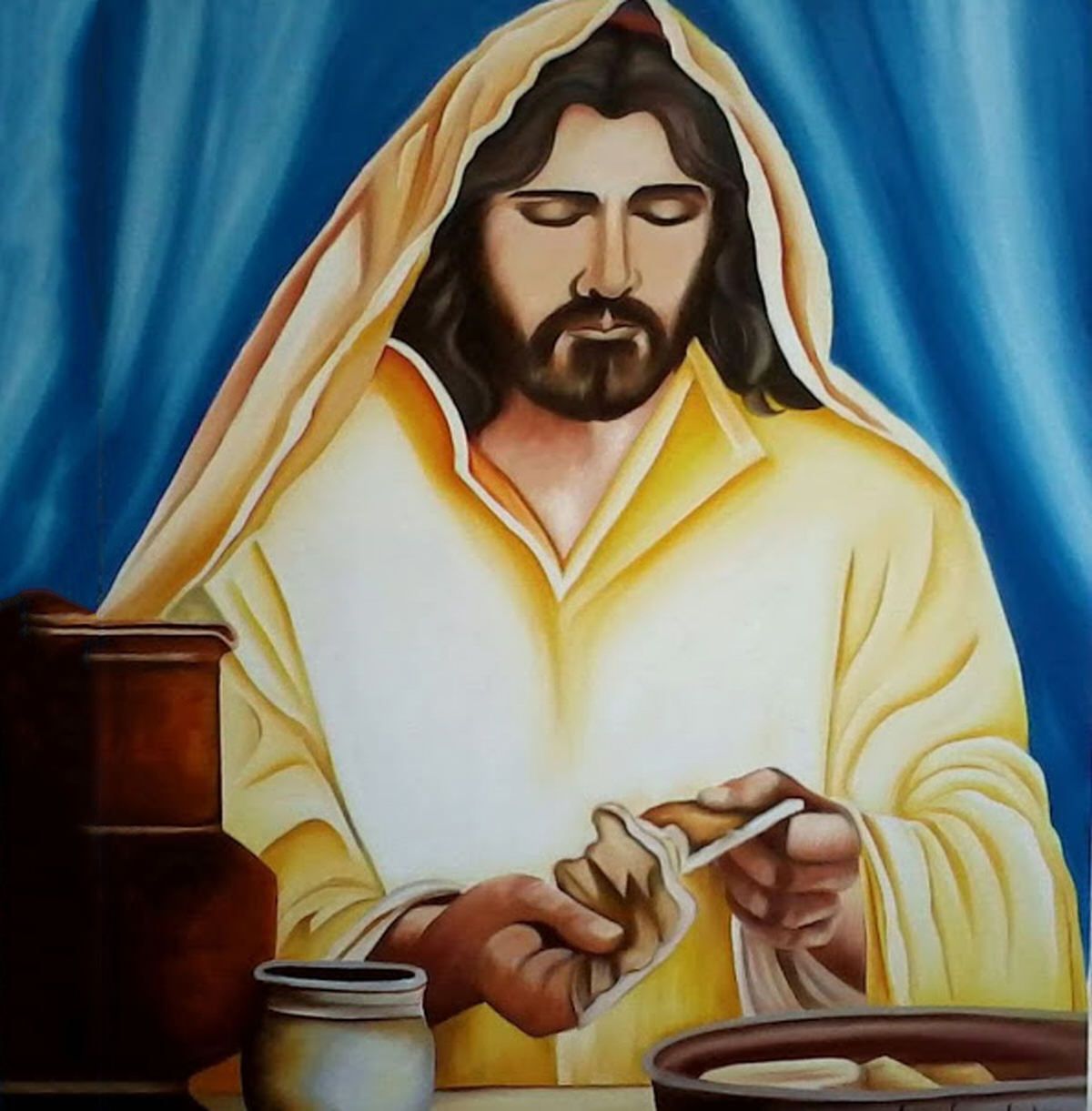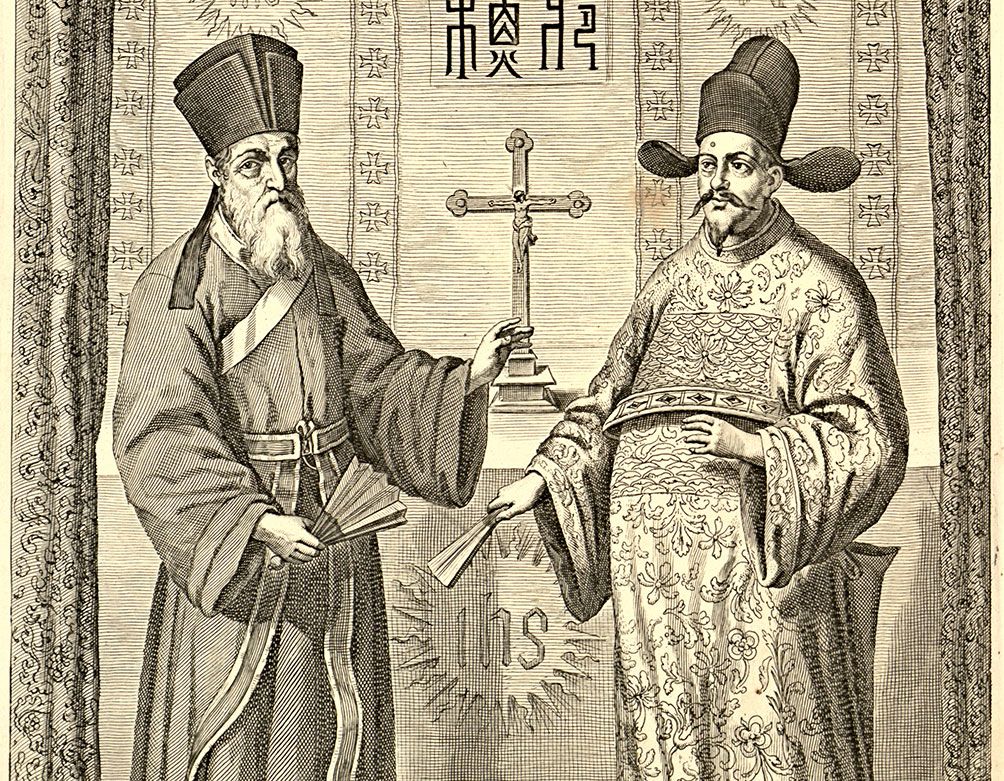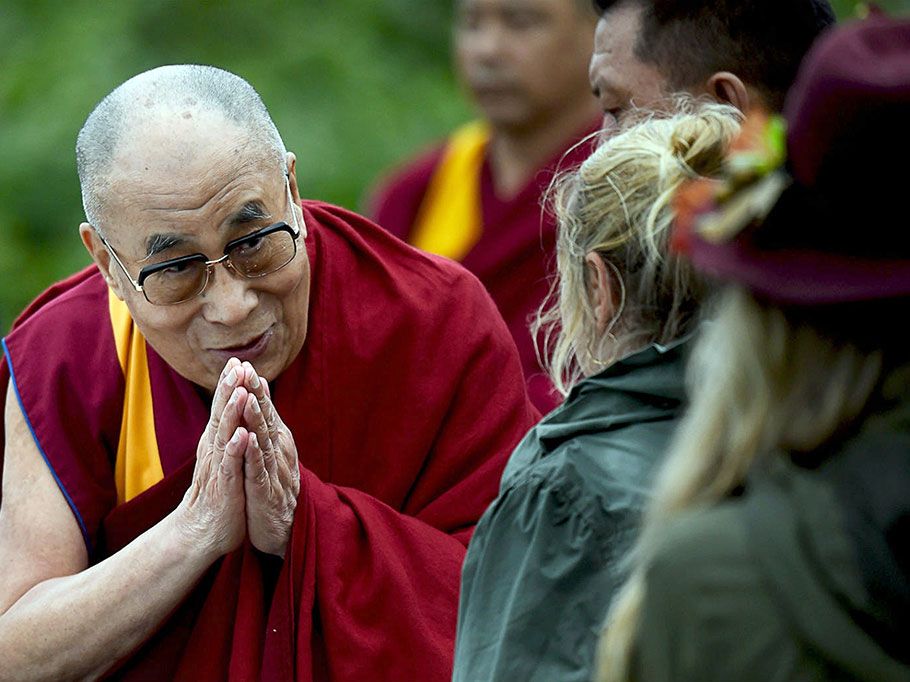I have worked in the urban poor areas of the South Bronx, New York City, and Metro Manila for 50 years. In that time, I have been exposed to material poverty, violence, and despair. But I have seen people and events that clearly speak of Jesus, too. First, Jesus was in the small children, the pre-schoolers. They are as pretty and handsome as children anywhere, but they seem far more cheerful, playful, and friendly than other children elsewhere. The rags they wear make them seem even more endearing. They are very welcoming and even delighted to see strangers, maybe because they have so little else to amuse themselves with. They are the precious wealth of the community; they are its happiness and hope. They are the reason mothers wake up at 4:00am to begin work that will end long after dark, and the reason fathers work 10-12 hour shifts loading sacks of sugar and rice on trucks, walking up narrow planks with 50-kilo sacks on their shoulders, hour after hour. All the bad things critics say about the slums are most likely true, but these children and the great love of the people for them in such inhuman situations are miraculous and speak of Jesus. Jesus lights up our lives like the children light up the slums. Jesus is the focus of Christian life, as children are the focus of the slums.
THE BIBLICAL POOR
I have noticed that there is a universal belief in God in the slums. For example, ask anyone, a man or woman, at a meeting to say a prayer and he or she will close his/her eyes and offer a simple prayer. God is really close by, and the people feel it. God is there, along with the bad smells, the rundown houses, and the violence. He is there for help and judgment.
Today’s poor are like Jesus as we knew Him in the Gospels. Like Jesus, they believe God can cure. They don’t believe the government, political action, or NGOs can help. They don’t believe they themselves can help themselves. Only God can help. We see this in the fact that 9 million people join the Black Nazarene procession each January, while only 5,000 poor people, at most, join urban poor rallies to protest against the government. They come to the procession fasting and with bare feet, believing God will help them, or thanking Him for helping them in the past. The poor of the Scriptures, as they are now, are the poor who trust completely and solely in God.
Jesus’ lack of trust in the government made sense in His days because the Romans, who ruled Palestine, were not at all interested in ending poverty. Only God had that agenda. Perhaps, if Jesus lived on earth at this present time, He might be clamoring for the government to help the poor.
We see in the urban poor a great ability to live fully in the present. If something enjoyable happens now, the poor easily forget their problems and stop, looking toward a better future. They thoroughly enjoy the present moment. It is the best use of time. In contrast, most of us never give up our regrets about the past and our concerns about the future. We fail to make the most of the good times. The poor are able to do it. Jesus used time exclusively for His mission. He was always fully in the moment.
INADEQUATE HELP
There are other situations in which we catch a glimpse of Jesus in the poor, but we cannot appreciate it or see Jesus in them if we don’t work with the poor themselves. Working with the poor requires that we know what the poor lack in order to build a more just and inclusive world, and how we are to help supply what is lacking. We will see wonderful images of Jesus among the urban poor when we see the poor working together according to their own plan.
In the Gospel of Luke, Jesus tells a rich official who wished to be saved: “Sell all that you have and give to the poor. Then come follow me” (Lk 18:18 FF). If Jesus were answering the question today, He might add a phrase or two: “Give it, to the poor but do it knowing what they lack and how to best help them. Then come follow me.”
The poor fail to see any connection between their faith and efforts by NGOs and others to improve housing and create jobs. No one has ever explained to them how social action is a form of activity Jesus supports today. No one has ever explained to the poor the Social Teaching of the Church.
Self-confidence must also be inculcated in the poor so that they, as individuals or as a group, will be able to influence how things are done in the larger society. Unfortunately, the poor have been left to believe that they are not capable of such work and should merely follow or pay attention to those in authority.
In Tacloban, where many NGOs now work among the poor, people’s organizations in the poor barangays were not formed, which could have been a vehicle for the people to push for change. The people know nothing about the housing laws that protected their land tenure security, for example, or any of the other rights guaranteed in the Constitution and the country’s laws.
The people lack their own world view, that is, their own appropriate understanding of why the socio-economic situation is as unequal as it is in terms of money and power. They need a view that should indicate how they can improve their position in society. They need a strong link between their faith and their social action.
GUIDING THE POOR
We can help the urban poor by encouraging and urging them to come together to analyze their situation, a first step in forming an urban poor world view, and to decide among themselves what is the most important and feasible reality for them to work for, and what actions are most likely to bring success.
The poor should be encouraged to form their own people’s organizations. It is only through wise use of their numbers that poor people can influence society. These people’s groups should be mass-based, democratic, and nonviolent.
The organizers who will work with the poor must first convince them that they themselves should try to change their reality, and that no one else will do it for them.
In our work in Tacloban, for example, we arranged a meeting at which the people would discuss what they needed the most. A long way into the discussion, a middle-aged woman stood up and said, “None of you is mentioning what the women need. We need bras, panties, sanitary pads. We need a place where we can shower and really clean ourselves and make us beautiful.” The crowd laughed. The poor victims still had some humor in them. The woman was far from beautiful. It turned out the U.N. has a package of the things the woman had asked for, and promised to provide it soon. Humor in the midst of suffering is a sign of personal maturity that reminds us of Jesus’ serenity in His passion.
Our meeting struck gold when another women told the crowd that she and her children couldn’t sleep anymore. She said her tent, like all the others, rested on wet sand. When the rains come, the water seeped into the bedding. The children got asthma, the old people, arthritic pains. No one sleeps. When the organizers asked if others had the same problems, almost all the people raised their hands. The organizers smiled; they had their first issue.
The meeting decided maritime plywood would make good flooring. They also promised to tell people who were not at the meeting about their plans for getting flooring for all. It was the first time the people had ever seen themselves as a group working together on common problems.
The community organizer (CO), along with some local people, visited every tent to see if the family living there wanted flooring. Some needed two sheets, some as many as four. The team got the names, ages and jobs of the occupants, and their special problems, such as the presence of crippled people, senior citizens, single mothers, pregnant or lactating mothers, blind and deaf, and other types of handicapped, vulnerable people. The CO came up with a list of 750 tents and 200 shanties. They obtained commitments from Christian Aid to fund the project. They got bids from three major hardware stores and made arrangements with the winning bidder to deliver the flooring to the site according to a schedule.
When the plywood was delivered, local fishermen volunteered to unload the trucks and help people get the heavy sheets to their homes. The fishermen who had been helped earlier by the Holy Spirit Sisters even settled disputes by explaining the project guidelines to people who felt they were shortchanged. A whole community was in action helping each other and was very happy with what they had achieved. This was the clearest image of Jesus’ presence – people uniting, working for one another, caring for the weakest. The single mothers and the very old, as well as the young, got their flooring.
It took us three days to distribute the plywood. It rained everyday, but everyday, the volunteer fishermen were there handling the heavy loads, helping everyone, and settling problems. The willingness to help is always there; it just needed an opportunity to be demonstrated.
Women showed us later how they had arranged the flooring in their tents. They were very proud of how the plywood made their tents look much more attractive.
At the next meeting, the people discussed fixing leaks in the tent canvass, and of replacing the tents with houses.
The people sounded much more knowledgeable about prices, bidding, work assignments and seemed much more confident in themselves. The people said prayers of thanksgiving to God and the Blessed Mother.
All this sounds unexciting and routine, but when the poor work for their welfare shoulder-to-shoulder, it teaches certain lessons: they realize they can achieve good things if they work together; they must plan every step, and nothing must be decided on the spur-of-the-moment; they are treated with respect when they are many, just as if they had lots of money. People tend to respect large numbers of people.
GOD AMID THE CHAOS
After the storm, a woman who lived far away from the Costa Brava district, which is on the shoreline, had a dream that the Sacred Heart was calling her to come rescue Him. She went and found the statue. The people put it on the altar of their chapel. Meanwhile, they found other broken and maimed statues in the debris and put them in the chapel as well.
The people have been praying there and hearing masses on weekends in that chapel since then. When asked why they gathered those broken statues that included Mother Mary without hands, saints without heads, angels without wings, the people said: “They (the statues) were dead and God brought them back to life. We were dead in the storm and God brought us back to life.”
This is the people’s own theology. Like Jesus in the Gospels, the people give all credit to God. Despite the tragedy they experienced, the people saw God in the chaos. They see a just God in what He has given and what He has taken away. They talk happily of life and salvation for which they are thoroughly grateful.

